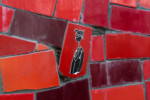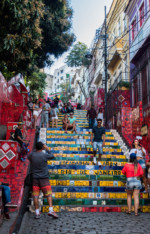words VICTORIA ISON | photography STEPHANIE AMADOR | BSU AT THE GAMES
Rising more than 10 stories through a Rio de Janeiro neighborhood, Selarón’s Staircase features tiles and visitors from around the world.
It begins with four steps. Simple gray stone where your soles touch them: shiny, colorful tile on every other inch. They make up the beginning of a staircase wide enough for two people to stretch out across, famous enough to win screen time in music videos and documentaries, and eccentric enough to capture the attention of visitors from around the world.
The Escadaria Selarón in Rio de Janeiro’s Lapa neighborhood began as a project by Chilean artist Jorge Selarón in 1990. As the local tour guides tell it, the painter was down on his luck, and the stairs were crumbling when Selarón started covering the front of the steps outside his house with broken pieces of ceramic tiles in order to thank the city and its people for the kindness they had shown him. As his project grew, so did interest. Before long, National Geographic was sending photographers to document it, and people from Thailand and Germany were bringing their own tiles to add to the community staircase.
Today, all 215 stairs and the walls around them are covered in ceramic art. They’re emblazoned with poems, pictures of international destinations and philosophical aphorisms. And they’re visited by people whose faces come in as many different colors as do the woven bracelets sold by vendors every few steps.
In the three months she’s worked at a souvenir shop half a block from the stairs, 33-year-old Brazilian native Luciana Biccas said she’s met people from as far away as Argelia and the Ivory Coast. Argentine Sergio Serrano, 48, visited the stairs with his family one day in late July while vacationing in Rio.
“We had to come,” Serrano said, grasping the hand of his curly-haired 5-year-old daughter as she clambered down the stairs. “It’s a major tourist destination, and it’s beautiful.”
From afar, the stairs look like one giant red wall at the end of an alleyway. Up close, they sparkle with whites, greens, blues, and yellows, and they suck viewers in with the depth of their detail. Some visitors treat the whole thing as a museum, floating from wall to wall and stair to stair, crouching to examine the details painted on tiles between steps.
Others give the whole thing a glance or two, content themselves with a selfie from the landing at the top of the first four stairs, and then set eyes on the vendors, who hawk engraved keys, magnets, jewelry, shot glasses and Brazil-themed scarves.
Some determine to climb to the very top and do, heartbeats racing. These are rewarded by the view from the zenith of the main part of the staircase, which is high enough to see the tops of buildings in Rio’s historic downtown several blocks away. The hardy climb the final 55 steps, perhaps stopping to buy water, juice, beer, coconut milk or ice cream from the residents of the homes next to the staircase, who make a permanent garage-sale-type business selling to the tourists.
One day in late July, Rio local Uiara Ferreira waited on the sidewalk at the street at the top of the stairs, looking away from Selarón’s artwork. She said she’s been a lifelong resident of Rua Pinto Matins, which lets out onto the stairs and forms part of the Rua neighborhood. She said she remembers the time before Selarón started his project.
“It used to be very dangerous because of the drug dealers and robberies,” Ferreria said. “Now’s it’s much better with people and fun and music. But the drug dealers didn’t like when [Selarón] started doing the stairs because he exposed them. So they killed him.”
Ferreira referred to Jan. 10, 2013, when Selarón’s body was found dead on the steps he’d decorated outside his home. Authorities never concluded whether his death resulted from homicide or suicide, according to local and national media outlets that reported in the weeks and months afterward.
Locals were sad and frustrated, Ferreira said, but Selarón’s death didn’t stop the tourists from coming — or the police from posting a car at the bottom of the staircase. Hundreds of people still visit the stairs each day, and thousands more are expected during the Olympic Games.
Today, instead of bringing tiles for Selarón to put on the wall, many tourists stop to buy vendors’ tiles to take home with them – keepsake reminders of the colorful artist who bettered his life and beautified his neighborhood one tile at a time.
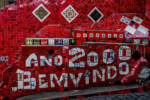

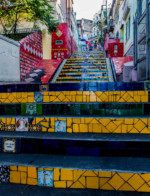

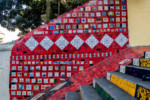
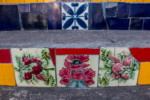

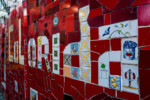
Victoria Ison is a Ball State University student and writer for Ball State at the Games, a group of 50 journalism students traveling from Muncie, Indiana, to Rio for the Olympic Games. Follow them at bsuatthegames.com, @bsuatthegames on Twitter and Instagram, and BSU at the Games on Facebook.


